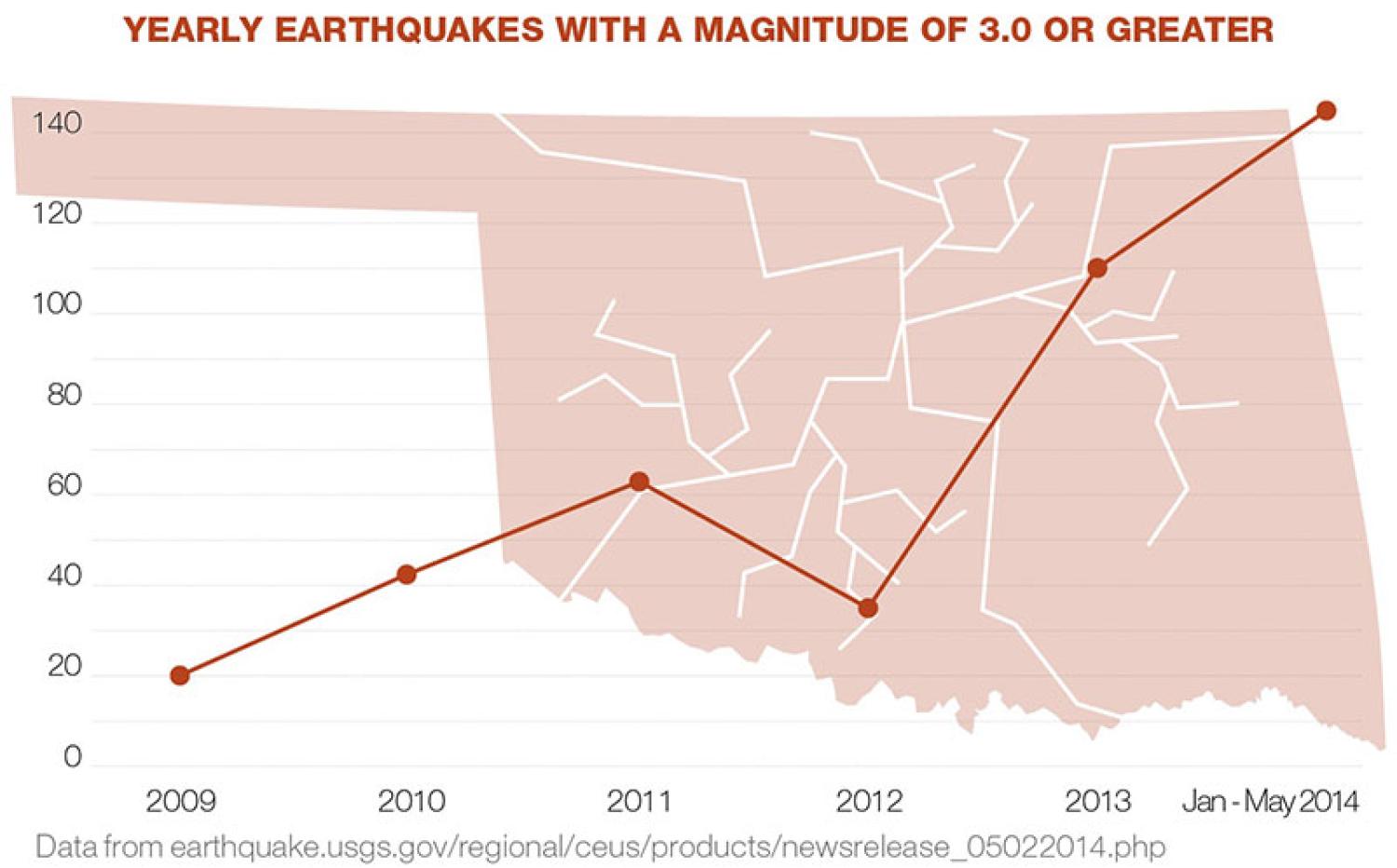
Earth-moving Science

2009: 20
2010: 42
2011: 62
2012: 35
2013: 110
Jan. – May, 2014: 145
Data from earthquake.usgs.gov/regional/ceus/products/newsrelease_05022014.php
Scientists examine why Oklahoma is having so many earthquakes, suspect fracking
Between Jan. 1 and May 2 of this year, Oklahoma experienced 145 earthquakes with a magnitude of 3.0 or greater. Not long ago the state averaged two a year.
Why the spike? An increase in oil and gas operations, such as hydraulic fracturing (or fracking), may explain it, according to a study involving CU researchers and published in the journal Science.
The research team, led by Cornell University, used hydrogeological modeling to determine how much pressure injected wastewater was generating in porous rocks underground. Under high pressure, fluids can seep into existing faults and pry rocks apart, allowing them to slip past each other more easily, resulting in earthquakes.
“Deciding whether an earthquake is induced or natural is a very difficult process scientifically,” says Matthew Weingarten, a doctoral student in CU-Boulder’s geological sciences department and a co-author of the study. “The classic way of determining the likelihood of an induced event is by looking at the seismological data alone. We took the next step in determining causation.”
Read more about Oklahoma earthquakes

